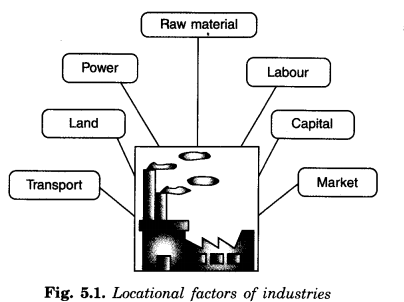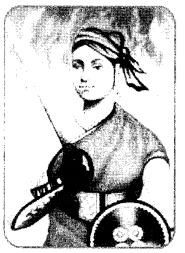NCERT Solutions for Class 8 Social Science History Chapter 3 Ruling the Countryside
These Solutions are part of NCERT Solutions for Class 8 Social Science.Here we have given NCERT Solutions for Class 8 Social Science History Chapter 3 Ruling the Countryside
Question 1.
Match the following:

Answer:

Question 2.
Fill in the blanks:
- Growers of woad in Europe saw Indigo as a crop which would provide competition to their earnings.
- The demand for indigo increased in late eighteenth-century Britain because of industrialization
- The international demand for indigo was affected by the discovery of synthetic dyes
- The Champaran movement was against indigo planters
Question 3.
Describe the main features of the Permanent Settlement.
Answer:
Main features of the permanent settlements:
- Permanent Settlements benefited landlords more than the government. The Zamindars and revenue collectors were converted into numerous landlords.
- They were not only to act as agents of the Government in collecting land revenue from the ryot but also to become the owners of the entire land in their Zamindaris.
- Their right of ownership was made hereditary and transferable. On the other hand, the cultivators were reduced to the low status of mere tenants and were deprived of long-standing rights to the soil and other customary rights.
- The Zamindars were to give 10/11th of the rental they derived from the peasantry to the state, keeping the only 1/11th for themselves.
- If the rental of a Zamindar’s estate increased he would keep the entire amount of the increase. The state would not make any further demand upon him. At the same time, the Zamindar had to pay his revenue rigidly on the due date even if the crop had failed for some reason; otherwise, his lands were to be sold.
Question 4.
How was the Mahalwari system different from the Permanent Settlement?
Answer:
Difference between Mahalwari System and Permanent Settlement:
- Under the permanent settlement, the revenue rate was fixed Permanently, not to be increased. But in the Mahalwari System, it was decided that the rate of revenue would be revised periodically.
- Zamindars collected the revenue from peasants in Permanent Settlement and gave a fixed part to the company. In Mahalwari this work was done by village headmen.
Question 5.
Give two problems that arose with the New Munro System of Fixing Revenue.
Answer:
- The ryots were supposed to improve their lands, but they did not. The system supposed peasants to get changed into rich enterprising farmers, but this did not happen.
- The revenue officials fixed too high a revenue demand. Ryots were not able to pay this much revenue.
Question 6.
Why were ryots reluctant to grow indigo?
Answer:
The reluctance of Ryots to grow Indigo:
- The planters generally forced the ryots to sign a contract.
- Cash advances were given at low-interest rates but that loan committed the ryots to cultivate at least 25% of holding with indigo.
- The planter provided seed, drill, etc. and actual cultivation was done by the cultivator.
- After the delivery of the harvested crop to the planter, a new loan was given to the ryot.
- This way the ryot \yas trapped in a cycle of the loan. They realized that they were actually getting a low rate for their hard labour.
- Planters forced the ryots to grow indigo on the best soils. Whereas the cultivators wanted to use that for rice.
Question 7.
What were the circumstances which led to the eventual collapse of indigo production in Bengal?
Answer:
- The indigo cultivators in Bengal were given loans but for that, they had to grow indigo on at least 25 percent of the area under their holdings.
- The planters provided only seed and drill. The rest of the works till the crop was harvested, was to be done by the ryots.
- The price the ryots got for their indigo, was very low. They had to take loans to repay their previous loans. Thus, the cycle of loans was never-ending.
- The planters usually insisted that indigo should be cultivated on the best soils in which peasants preferred to cultivate rice.
- The indigo crops exhausted the soil rapidly. After an indigo harvest, the land could not be sown with rice. These were certain circumstances which led to the eventual collapse of indigo production in Bengal.
Question 8.
Find out more about the Champaran movement and Mahatma Gandhi’s role in it.
Answer:
Hints: Discuss the following points:
- The oppressive attitude of the British Government.
- The rebellion of the Ryot peasants.
- Gandhiji’s role in it.
Question 9.
Look into the history of either tea or coffee plantations in India. See how the life of workers in these plantations was similar to or different from that of workers in indigo plantations.
Answer:
Hints: Life in Tea Plantations of Assam:
- Estate owners
- Workers
(a) Wages (b) Habitation (c) Facilities - Problems.
Life in the Indigo Fields - Cultivators or Zamindars were the owners.
- Generally, cultivators worked in fields themselves.
Objective Type Questions
1. Match the following:

Answer:
(i) c
(ii) d
(iii) e
(iv) a
(v) b
(vi) f
2. State whether True or False:
- The demand for indigo increased in the late seventeenth century. False
- Revenues were fixed in the permanent settlement. True
- The company purchased goods in India before 1865 through gold and silver imports. True
- Mahalwari system came into existence in 1700. False
- The very high rate of revenue was the major problem of the ryotwari system. True
- Weekly markets were very flourishing during the economic crisis of Bengal. False
- The company introduced the Permanent Settlement in 1793. True
3. Fill in the blanks:
- Gomasthas were the agents of planters
- The Mughal emperor appointed the East India Company as the Diwan of Bengal.
- The painter was commissioned by Clive to record memorable events of his life.
- Ryotwari system was also known as Munro System
- Ryoti is cultivation on Ryot’s lands.
- Bigha is the unit of land measurement by the British in Bengal.
Multiple Choice Questions
Choose the correct answer:
1. The Champaran movement was against
(a) peasants
(b) East India Company
(c) the oppressive attitude of the planters
(d) none of the above
2. The Company was appointed as the Diwan of Bengal in
(a) 1762
(b) 1763
(c) 1764
(d) 1765
3. Gandhiji visited Champaran
(a) to see the plight of Indigo planters in Champaran
(b) to see the progress of indigo plantation
(c) to see the managing system of the company
(d) none of the above
4. Who devised the new-system of revenue called Mahalwari?
(a) Queen Elizabeth
(b) Holt Mackenzie
(c) Queen Victoria
(d) Gandhiji
5. Growers of woad in Europe saw ……. crop as competition to their earnings.
(a) tea
(b) rubber
(c) indigo
(d) coffee
6. Indigo production came down in Bengal in
(a) 1850
(b) 1852
(c) 1855
(d) 1859
7. Who had developed the Munro system?
(a) Captain Alexander
(b) Holt Mackenzie
(c) Thomas Munro
(d) None of these
8. How much proportion of Indigo was imported from India by Britain in 1810?
(a) 75%
(b) 95%
(c) 90%
(d) 85%
9. Colebrook describes the conditions of the under-tenant farmers in
(a) 1800
(b) 1805
(c) 1806
(d) 1810
10. After harvest, the indigo plant was taken to the …….. in the indigo factory.
(a) dye
(b) vat
(c) farm
(d) machine
11. The international demand for indigo was affected by the discovery of
(a) synthetic dyes
(b) woad
(c) blue colour
(d) none of these
We hope the NCERT Solutions for Class 8 Social Science History Chapter 3 Ruling the Countryside, helps you. If you have any query regarding NCERT Solutions for Class 8 Social Science History Chapter 3 Ruling the Countryside, drop a comment below and we will get back to you at the earliest.

























